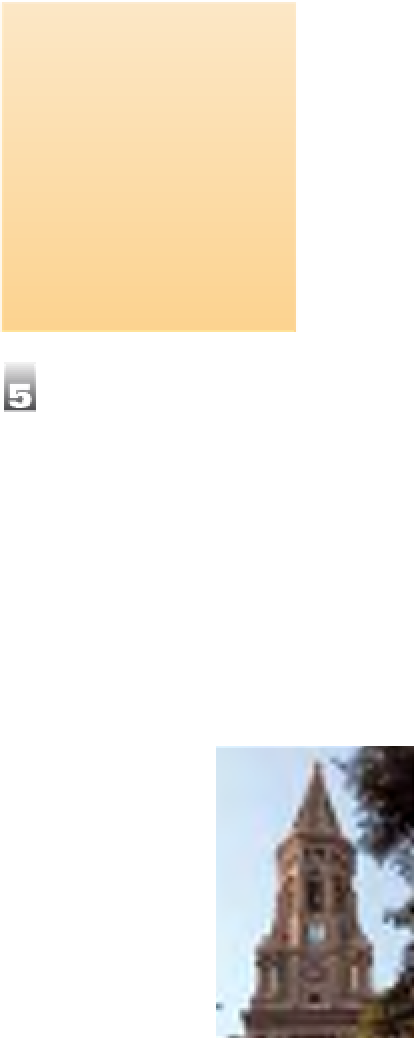Travel Reference
In-Depth Information
Left
A house in Kollwitzplatz
Centre
At the Prater
Right
In Kollwitzstraße
Gründerzeit (the years after the
founding of the German Empire
in 1871) is one of the nicest
ways to experience Prenzlauer
Berg. Ancient-looking street
lamps and signs, cobbled
streets, antiquated shop signs
and a few atmospheric pubs take
the visitor back to the late 19th
century.
d
Between Wörther and
Danziger Str.
•
Map H1/2
Prenzlberg or
Prenzlauer Berg?
Snobs today simply say
“Prenzlberg” when talking about
“their” quarter. But this name is
used mainly by West Berliners
and West Germans who have
recently moved here - the real
name is Prenzlauer Berg, just as
it is written. The supposed
nickname is just a new-fangled
term for a district that
has become fashionable
almost overnight.
Zionskirche
Zionskirche, dating from
1866-73, and the square of the
same name form a tranquil oasis
in the middle of the lively district.
The Protestant church has always
been a political centre, too. During
the Third Reich, resistance groups
against the Nazi regime congre-
gated here and, during the East
German period, the alternative
“environment library” (an inform-
ation and documentation centre)
was established here. Church
and other opposition groups who
were active here played a decis--
ive role in the political transform-
ation of East Germany in 1989-90,
which eventually led
to reunification.
d
Zionskirchplatz
•
Map G2
•
noon-4pm Sun, 10am-
11am, 4-5pm Wed, 4-6pm
Thu
•
(030) 449 21 91
Jewish Cemetery
The small Jewish cemetery
is one of the most charming
cemeteries in the city. The
tombstones lie or stand here
amid dense scrub and high trees.
The cemetery was set up in
1827, when the former Jewish
cemetery in Große Hamburger
Straße was closed. Two of the
famous personalities who have
found their final resting places
here are the painter Max Lieber-
mann (1847-1935) and the
composer Giacomo Meyerbeer
(1791-1864).
d
Schön-
hauser Allee 23-25
•
Map H2
Husemann-
straße
The East German
regime undertook a
perfect restoration of
this idyllic street for
Berlin's 750th anni-
versary celebrations.
A stroll through the
leafy roads lined with
houses from the
Wasserturm
The unofficial
symbol of the district
is the giant, 30-m (98-
ft) high Water Tower
in Knaackstraße, built
in 1877 as a water
Zionskirche
www.berlin.de/home/TouristCenter/Sightseeing/Sehenswuerdigkeiten/
deutsch/Prenzlauer_Berg/juedfriedhofpberg.html
140













